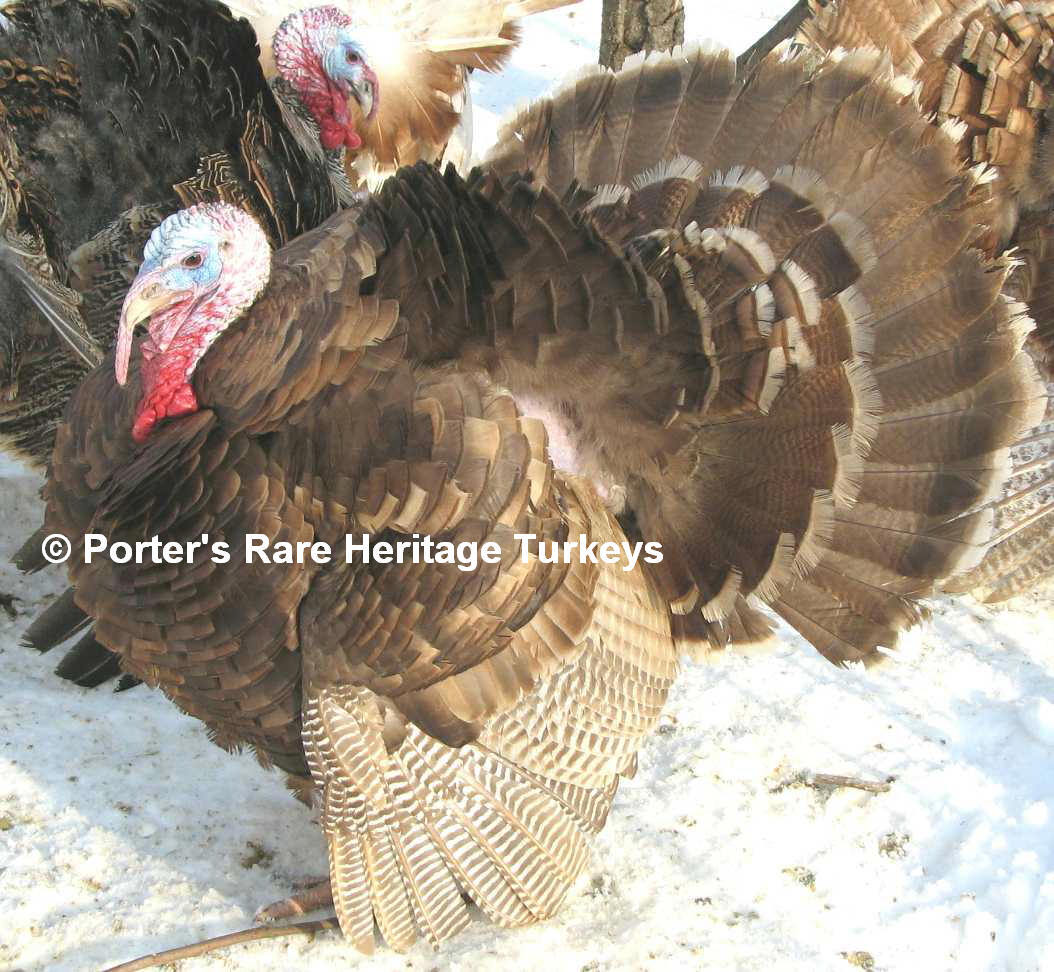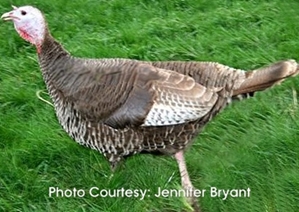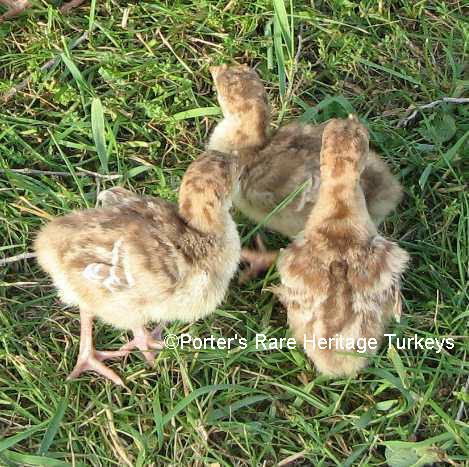

Formerly known as "Brown"
This is an old variety that was listed in receipts when transporting turkeys to markets in "turkey trots" during the late 1700s and early 1800s in Philadelphia. They carry the sex-linked brown genes and thus were important at the beginning of this century for producing poults that could be sexed at hatching. Breedings of Auburn toms and bronze hens will produce bronze toms and auburn hens thus making it quite easy to sex poults by color at hatch. However, this did not become a serious market requirement and they never became very popular.
Auburn describes a variation in the typical bronze plumage color in which bronze is replaced with a red-brown pigmentation. At day of age, the auburn poult resembles the bronze but with black stripes replaced with a red-brown coloration. In the adult bird, the bronze pigmentation is also replaced by a red-brown color. The barring present in the primary and secondary flight feathers is red-brown and white in contrast to the black and white typical in the bronze bird. Genotype (bb ee) for toms and (bb e-) for hens. Bronze based with sex-linked brown modifying genes. Basically a "Brown Bronze"
Initially when this color pattern was first described it was noted as brown, but in 1990 Savage and Attamangkune decided that "auburn" was a more accurately descriptive name for this "brown color pattern".
Weights: (33 lbs. old toms and 18 lbs. old hens)
Here's what Asmundson had to say about brown.
"There are two alleles at the sex-linked brown locus. The dominant allele (E) permits
expression of the bronze plumage color. The mutant allele (e) gives brown pigmentation.
(Asmundson 1950). The brown phenotype in the day-old poult has the same
pattern as the bronze but the down color is reddish-brown. In the
adult, the plumage pattern is the
same as that of the bronze except that brown pigment is present in place of the typical
black and bronze. Barring is still present, but it consists of brown and white bars. The brown color is often described as auburn.

Note the brown and white barring replacing black and white unlike in a typical bronze.
The addition of the brown gene (e) on a bronze turns all areas normally black to brown.

Newly hatched Auburn poults
Note the red brown coloration with brown stripes replacing black.